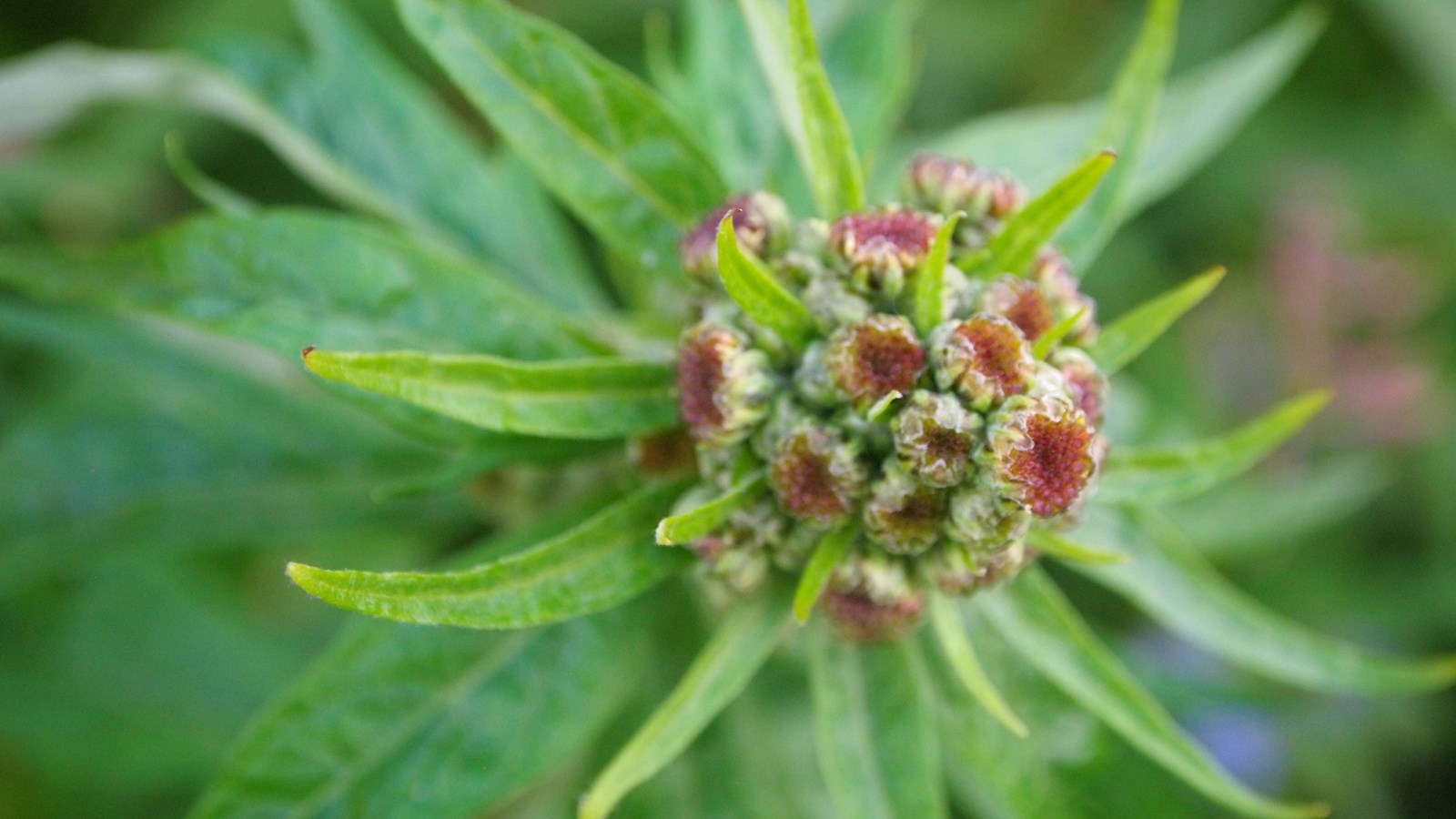Last updated: January 14, 2021
Place
Stinkweed at Western Arctic National Parklands

NPS/Linda Jeschke
Quick Facts
Location:
Northwest Arctic Heritage Center garden, Kotzebue AK
Significance:
Medicinal Plant
Amenities
3 listed
Cellular Signal, Scenic View/Photo Spot, Wheelchair Accessible
Stinkweed (Artemisia tilesii) is also known by the name Wild Sage or Wormwood. In Iñupiaq, it is known as Sargiq or Sargiġruaq. Although the common name makes it sound like this plant is disliked, Stinkweed is known as the miracle plant of the area and can be used for any number of fixes.
True to its name, this plant carries a very distinct smell. It is difficult to describe, but even more difficult to forget. Once you are in front of the plant, reach out and gently rub one of the leaves.
Unlike most of the other plants on our garden tour, Sargiq is not encouraged as a food source. Small amounts can be ingested in tea form or as spices. However, certain species of Artemisia can contain absinthol and, when overindulged upon, can cause serious side effects such as tremors.
Stinkweed can be utilized in a variety of forms, including tea, poltice, salve, oil, simply dried or even as a soak.
Tea can be drank to help with cold symptoms and indegestion.
A poltice of leaves, salve, or the oil can be placed directly on sores or cuts to help draw out infections, reduce scar tissue, and speed the healing process. Salves can also be used as a moisturizer for cracked hands through the winter.
Dried leaves can be placed inside pillows and set under aching joints. This is said to help with arthritis. Or they can be placed in shoes to help dry the items while reducing microbes that may be causing unpleasant smells found there. This is also a treatment for athlete's foot. Some even use sargiq in their babies diapers to this day.
It is also called wormwood as it has been used historically to clear intestinal worms from livestock. Humans with issues of round worms or pinworms may benefit from drinking the tea regularly. There has been some research to suggest wormwood can be helpful to those suffering from malaria.
What a miracle plant! It is no wonder that sargiq is the most frequently turned to of the local medicinal plants!
Sources:
True to its name, this plant carries a very distinct smell. It is difficult to describe, but even more difficult to forget. Once you are in front of the plant, reach out and gently rub one of the leaves.
Unlike most of the other plants on our garden tour, Sargiq is not encouraged as a food source. Small amounts can be ingested in tea form or as spices. However, certain species of Artemisia can contain absinthol and, when overindulged upon, can cause serious side effects such as tremors.
Stinkweed can be utilized in a variety of forms, including tea, poltice, salve, oil, simply dried or even as a soak.
Tea can be drank to help with cold symptoms and indegestion.
A poltice of leaves, salve, or the oil can be placed directly on sores or cuts to help draw out infections, reduce scar tissue, and speed the healing process. Salves can also be used as a moisturizer for cracked hands through the winter.
Dried leaves can be placed inside pillows and set under aching joints. This is said to help with arthritis. Or they can be placed in shoes to help dry the items while reducing microbes that may be causing unpleasant smells found there. This is also a treatment for athlete's foot. Some even use sargiq in their babies diapers to this day.
It is also called wormwood as it has been used historically to clear intestinal worms from livestock. Humans with issues of round worms or pinworms may benefit from drinking the tea regularly. There has been some research to suggest wormwood can be helpful to those suffering from malaria.
What a miracle plant! It is no wonder that sargiq is the most frequently turned to of the local medicinal plants!
Sources:
- Jones, Anore. Plants That We Eat: Nauriat Nigiñaqtuat. Univ. of Alaska Press, 2010.
- Garibaldi, Ann. Medicinal Flora of the Alaska Natives: a Compilation of Knowledge... Alaska Natural Heritage Program, Environment and Natural Resources Institute, University of Alaska Anchorage, 1999.
- Schofield, Janice J. Discovering Wild Plants: Alaska, Western Canada, the Northwest. Alaska Northwest Books, 1995.
